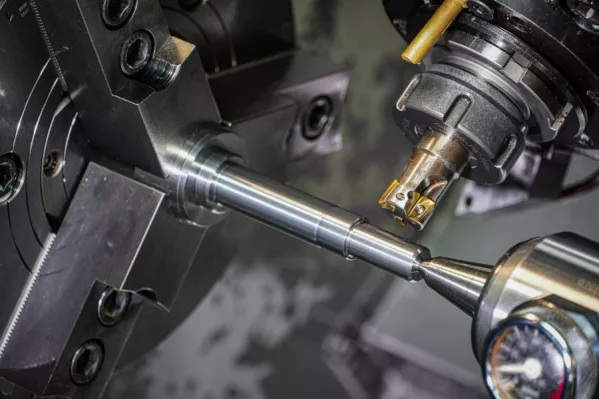2024-03-14
Concurrent and Conventional Milling: A Comparison of Machining Techniques

Machining is one of the key processes in industrial production, enabling precise shapes and surfaces on various materials. Milling, as one of the machining methods, is widely used for processing metals, plastics, and other materials. Within milling techniques, we distinguish between concurrent and conventional milling. Each of these methods has its specific advantages and applications that should be considered when choosing the most appropriate machining process.
What is Concurrent Milling?
Concurrent milling, also known as climb milling, is a method where the direction of the tool's rotation is the same as the direction of the feed of the workpiece. In other words, the tool and material move in the same direction during cutting.
Advantages of Concurrent Milling
- Better surface quality: Since the tool engages with the material in a manner that minimizes vibrations, the quality of the finished surface is often higher than that of conventional milling.
- Reduced tool wear: The concurrent entry of the tool into the material causes fewer abrupt impacts, which can contribute to a longer tool life.
- Higher feed rates: The ability to use higher feed rates without the concern of excessive tool load.
Disadvantages of Concurrent Milling
- Potential for smearing: In some cases, especially with soft materials, smearing may occur, which deteriorates the machining quality.
- Limitations in chip removal: Chips are pushed ahead of the tool, which can hinder their effective removal, especially in deep slots.
What is Conventional Milling?
Conventional milling, also known as up milling, involves the opposite arrangement of the directions of rotation of the tool and the feed of the workpiece. In this configuration, the tool and material move opposite to each other.
Advantages of Conventional Milling
- Better cutting conditions: Starting the cut from the unburdened side of the material can provide better cutting conditions, reducing the risk of damage to the edges of the workpiece.
- Effective chip removal: Chips are efficiently extracted from the cutting area, which is beneficial in deep milling.
- Reduced risk of tool jamming: Better chip removal conditions minimize the risk of tool jamming, which is important when machining materials prone to smearing.
Disadvantages of Conventional Milling
- Greater tool loads: Starting the cut at the material edge can cause greater tool loads, which may result in faster tool wear.
- Potential deterioration in surface quality: Increased tool vibrations during entry into the material can negatively affect surface quality.
Choosing the Right Milling Method
The choice between concurrent and conventional milling should be dictated by the specifics of the material being machined, the requirements for surface quality, and the overall machining conditions. Proper adjustment of machining parameters, such as rotational speed, feed rate, and cutting depth, can significantly affect the efficiency and quality of the final product.
A key aspect is also adapting the type of tool and its parameters to the chosen milling method, which can help optimize the process and minimize the risk of undesirable effects such as excessive tool wear or poor surface finish.
«return
